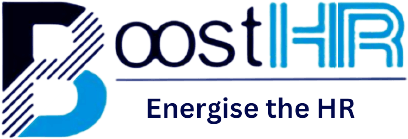Human Resource Management (HRM) is an essential organizational function that manages the workforce to achieve organizational objectives. It involves the recruitment, selection, training, performance management, compensation, and retention of employees. HRM is crucial for any organization to achieve success, as it helps to align the organization’s objectives and goals with its workforce’s skills and capabilities.
However, like any other business function, HRM also faces various challenges and issues that can impact its effectiveness. These issues can range from low employee morale, high turnover rates, and lack of employee engagement to more complex issues, such as ineffective HR policies and practices. It is essential to address these issues effectively to ensure the smooth functioning of an organization.
In this article, we will discuss some of the most common HRM issues organizations face and how they can be addressed effectively. Organizations can develop a more effective HRM strategy that aligns with their overall business goals and objectives by understanding these issues and their solutions.
Table of Contents
7 Common HRM Issues and Solutions
Employee Turnover
High turnover rates can impact the productivity and profitability of the organization, as well as create additional costs associated with recruiting and training new employees.
Solution: Organizations can address employee turnover by implementing effective onboarding and training programs, improving employee engagement, providing competitive compensation and benefits, and fostering a positive work culture.
Low Employee Morale
Low employee morale can result in decreased productivity, lack of motivation, and increased absenteeism. Various factors, such as poor management, inadequate compensation, and lack of recognition, can cause it.
Solution: To address low employee morale, organizations can conduct employee surveys to identify the underlying issues, provide opportunities for career growth and development, offer rewards and recognition programs, and improve communication and collaboration among employees and management.
Ineffective HR Policies and Practices
Ineffective HR policies and practices can lead to confusion, lack of consistency, and even legal issues. For example, a poorly designed performance management system can result in employee dissatisfaction and disengagement.
Solution: To address ineffective HR policies and practices, organizations can conduct an HR audit to identify areas of improvement, update HR policies and procedures to ensure legal compliance and consistency, and provide training and support to HR staff and managers to ensure effective implementation of policies and practices.
Workplace Diversity and Inclusion
Failure to foster a diverse and inclusive workplace can result in lower employee engagement, increased turnover, and legal issues.
Solution: Organizations can foster a diverse and inclusive workplace by implementing recruitment and retention strategies that attract and retain a diverse workforce, training on unconscious bias and cultural competence, and promoting an inclusive culture through policies and practices.
Poor Communication
Poor communication between employees and management can lead to misunderstandings, low morale, and decreased productivity.
Solution: Organizations can improve communication by implementing regular feedback channels, providing training on effective communication, and promoting a culture of open communication and transparency.
Inadequate Training and Development
Inadequate training and development opportunities can result in employees feeling unsupported and ill-equipped to perform their roles, leading to low morale and decreased productivity.
Solution: Organizations can address inadequate training and development opportunities by providing access to training and development programs, promoting a learning culture, and incorporating training and development into performance management systems.
Performance Management
Poorly designed or executed performance management systems can lead to employee dissatisfaction, disengagement, and decreased productivity.
Solution: Organizations can address performance management issues by implementing clear and measurable performance goals, providing regular feedback and coaching, and aligning performance management with career development opportunities.
Organizations can improve employee engagement, productivity, and overall organizational success by addressing these common HRM issues with the potential solutions provided. These solutions provide a starting point for organizations to develop a more effective HRM strategy that aligns with their business goals and objectives.
Case Studies or Examples of Businesses That Have Successfully Implemented Solutions
One example of a business that successfully addressed HRM issues is Zappos, an online shoe and clothing retailer. Zappos implemented a unique company culture emphasizing employee empowerment and happiness, resulting in low turnover rates and high employee engagement. Another example is Netflix, which implemented a results-oriented work environment, allowing employees to have more flexibility and autonomy in their work. This resulted in increased productivity and improved employee satisfaction.
Conclusion
In this article, we explored common HRM issues, and potential solutions organizations can implement to address them. Employee turnover, low employee morale, ineffective HR policies and practices, workplace diversity and inclusion, poor communication, inadequate training and development, and performance management are all critical HRM issues that can negatively impact organizational success.
To address these HRM issues, organizations can implement solutions such as effective onboarding and training programs, career growth and development opportunities, diversity and inclusion strategies, open communication channels, and clear and measurable performance goals. By doing so, organizations can improve employee engagement, productivity, and overall success.
Organizations need to address HRM issues as they impact not only employee satisfaction and retention but also the organization’s overall success. Investing in HRM strategies that address these issues can increase productivity, profitability, and employee engagement, ultimately contributing to organizational success.
BoostHR software provides tools for effective HR management, facilitates regular feedback and engagement, and promotes a positive and inclusive workplace culture to resolve these HRM issues as early as possible.
In conclusion, organizations should prioritize addressing common HRM issues and implementing practical solutions to improve the employee experience and drive organizational success. By doing so, they can create a positive workplace culture that attracts and retains top talent while achieving their business goals and objectives.
FAQs (Frequently Asked Questions)
What do human resources do?
Human resources (HR) is responsible for managing the workforce of an organization. HR professionals handle various tasks, such as recruiting and hiring new employees, managing employee benefits and compensation, overseeing employee training and development, and ensuring compliance with employment laws and regulations. They also help maintain a positive and inclusive workplace culture, handle employee relations and grievances, and manage performance evaluations and disciplinary actions.
What are the seven functions of HR?
The seven functions of HR include:
1. Recruitment and selection.
2. Training and development.
3. Compensation and benefits.
4. Performance management.
5. Employee relations.
6. Health and safety.
7. Compliance with labor laws and regulations.
Each function plays a vital role in ensuring that an organization’s human resources are managed effectively and efficiently.
What are some HR best practices?
Some HR best practices include creating a positive and inclusive workplace culture, offering competitive compensation and benefits packages, providing regular employee training and development opportunities, maintaining open communication channels between management and employees, offering flexible work arrangements, and promoting work-life balance.
Why is HR planning and why is it important?
HR planning is essential because it helps organizations align their workforce with their strategic goals and objectives. By identifying current and future workforce needs, HR planning ensures that the organization has the necessary talent to meet business demands. It also helps organizations anticipate changes in the labor market, plan for succession and workforce development, and optimize workforce performance.
What is HR strategy, and why is it important?
HR strategy refers to an organization’s plan of action to manage its human resources to achieve its business objectives. An effective HR strategy helps organizations attract, retain, and develop top talent, align the workforce with the organization’s goals and objectives, and create a positive and inclusive workplace culture. It also helps organizations anticipate and respond to changes in the labor market, regulatory environment, and technological advancements.
What are the challenges of HRM in the 21st century?
Some challenges of HRM in the 21st century include managing a diverse and global workforce, adapting to technological advancements, ensuring compliance with employment laws and regulations, maintaining work-life balance, managing employee engagement and retention, promoting workplace diversity and inclusion, and navigating the changing nature of work.
What are ethical issues in HRM?
Ethical issues in HRM can arise when HR professionals are faced with decisions that involve balancing the organization’s interests with its employees. Some ethical issues in HRM include discrimination, harassment, privacy violations, conflicts of interest, and whistleblowing. HR professionals must ensure that their actions align with ethical principles and values and are transparent and fair in their decision-making.
What are the Top 6 Factors affecting human resource management?
The top six factors affecting human resource management include:
1. Technological advancements.
2. Labor market changes.
3. Workforce demographic shifts.
4. Globalization and internationalization.
5. Regulatory and legal compliance.
6. Employee expectations and demands.
These factors can impact how organizations manage their workforce and require HR professionals to be adaptable and responsive to changes in the business environment.
What are the external factors affecting HRM?
External factors affecting HRM include changes in the political and economic environment, labor market shifts, technological advancements, demographic trends, cultural and social factors, and globalization. These external factors can impact an organization’s human resource practices and require HR professionals to be aware of and responsive to changes in the business environment.
What is the most common criticism of HRM?
One of the most common criticisms of HRM is that it is too focused on administrative tasks and not enough on strategic planning and decision-making. Critics argue that HR professionals are often seen as “paper-pushers” rather than crucial members of the leadership team and are not involved enough in shaping the organization’s overall direction. This criticism is often rooted in the historical evolution of HRM, which began as an administrative function focused on payroll management, benefits, and other routine tasks. However, as the role of HR has evolved, many organizations have recognized the strategic value of HRM. They have sought to integrate HR professionals more fully into the decision-making process.
How can HRM contribute to organizational success?
HRM can contribute to organizational success in several ways:
1. By ensuring that the organization has the right people in the right roles, HRM can help to maximize individual and team performance, leading to better overall results.
2. HRM can help to foster a positive and inclusive workplace culture, which can improve employee morale and engagement, reduce turnover, and enhance the organization’s reputation as an employer of choice.
3. HRM can support organizational growth and change by developing and implementing effective talent management strategies, including recruitment, training and development, and succession planning.
4. By providing data-driven insights and guidance, HRM can help to inform and shape organizational strategy, leading to better decision-making and improved business outcomes.
What are the benefits of using technology in HRM?
The benefits of using technology in HRM are many. First, technology can help automate routine administrative tasks, freeing HR professionals to focus on more strategic and value-added activities. Second, technology can provide data-driven insights that can inform HR decision-making and enable organizations to identify opportunities for improvement. Third, technology can facilitate communication and collaboration among HR professionals and between HR and other departments, improving overall organizational effectiveness. Fourth, technology can improve employee engagement and satisfaction by providing user-friendly interfaces and self-service tools for benefits administration, performance management, and other HR processes. Finally, technology can support remote work and flexible schedules, enabling organizations to attract and retain top talent regardless of location or work preferences.


0 Comments